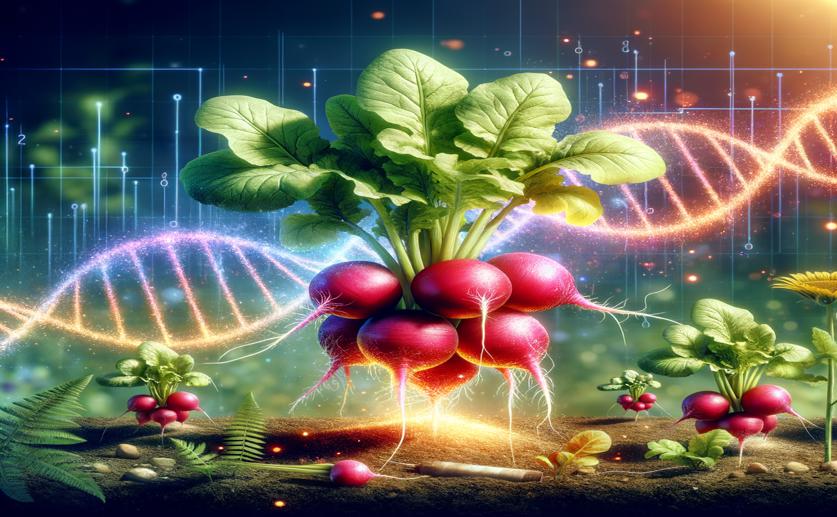
Boosting Nutrient Compounds in Radishes Through Gene Activation
Greg Howard
27th April, 2024

Image Source: Natural Science News, 2024
Key Findings
- Researchers at Bharathiar University genetically modified radishes to increase their quercetin, an antioxidant
- The modified radishes produced over nine times more quercetin than regular radishes
- This advancement could lead to healthier radishes and similar improvements in other crops
References
Main Study
1) Overexpression of AtMYB12 transcription factor simultaneously enhances quercetin-dependent metabolites in radish callus.
Published 30th April, 2024 (future Journal edition)
https://doi.org/10.1016/j.heliyon.2024.e27053
Related Studies
2) Deciphering the Nutraceutical Potential of Raphanus sativus-A Comprehensive Overview.
3) AtMYB12 regulates flavonoids accumulation and abiotic stress tolerance in transgenic Arabidopsis thaliana.
4) Conservation and sustainable use of medicinal plants: problems, progress, and prospects.
5) Regulation of flavonoids in strawberry fruits by FaMYB5/FaMYB10 dominated MYB-bHLH-WD40 ternary complexes.



 3rd April, 2024 | Jim Crocker
3rd April, 2024 | Jim Crocker